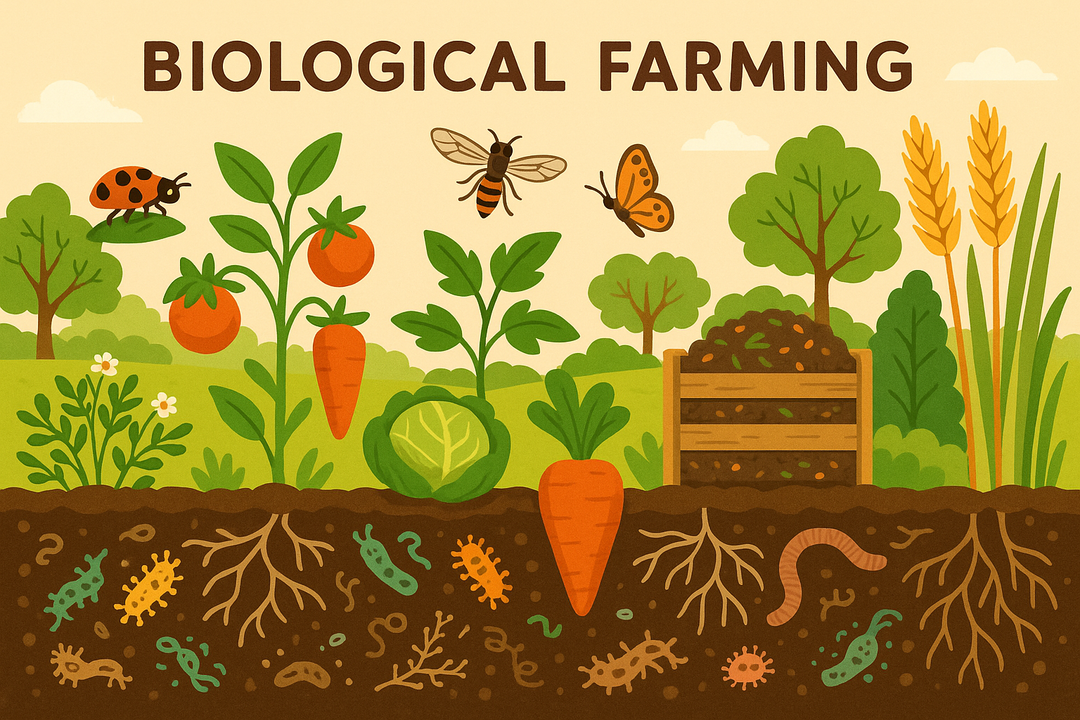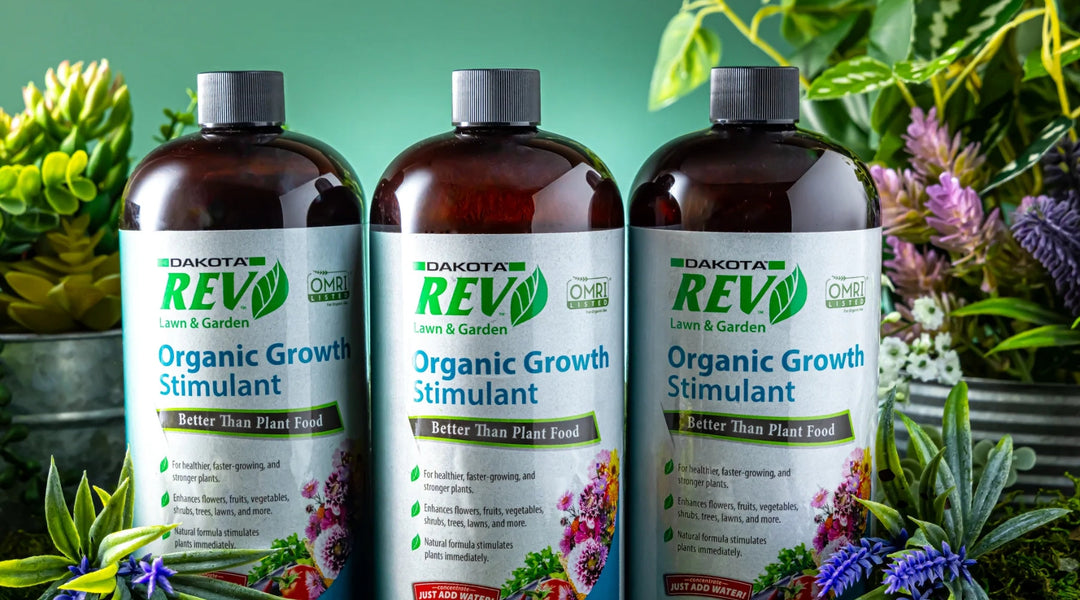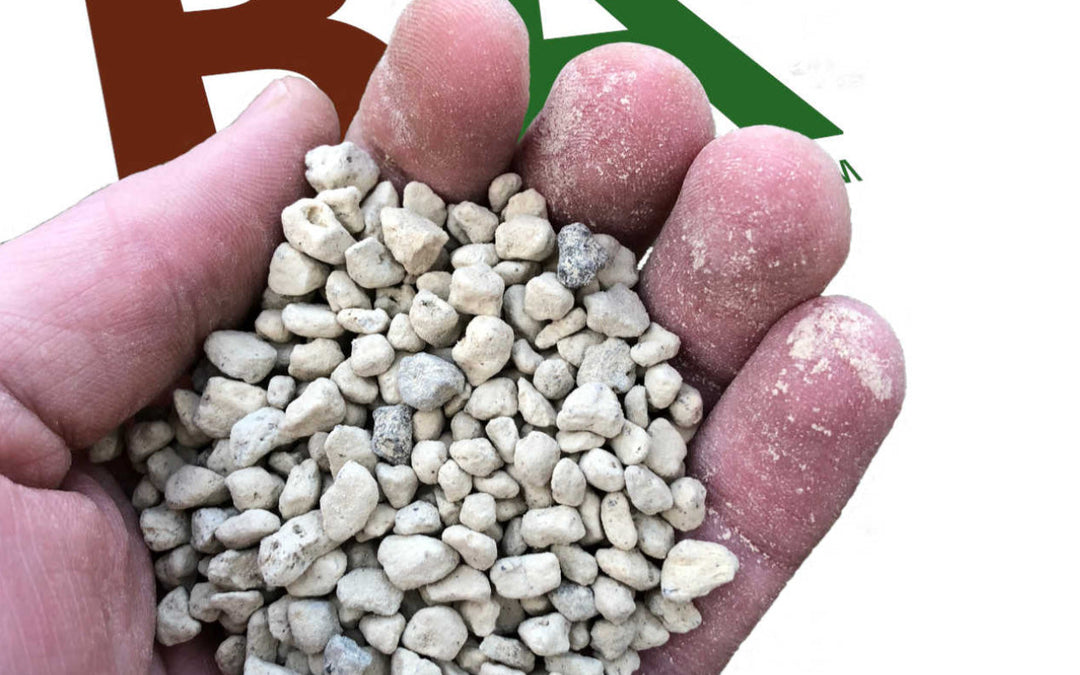Gypsum as an Agricultural Amendment
Whether you’re a hobby gardener or a large-scale farmer, your soil sometimes needs a little extra help to produce those bountiful harvests and beautiful flowers. By promoting both physical and chemical remedies to compaction, offering up needed calcium and sulfur, and more, gypsum is an excellent input for overall soil health that can make your green thumb look like the greenest in town. Read on to learn all you need to know about gypsum, how it can benefit your plants, and how to apply it.
What is in Gypsum?

Gypsum, often called Plaster of Paris, is a naturally occurring mineral composed of calcium ions (Ca 2+), sulfate ions (SO4 2-), and water molecules (H2O). Gypsum deposits form over time as calcium sulfate salts settle in seawater. Gypsum is very soft and is used to define 2 on the Mohs Hardness Scale.
Where Do We Get Gypsum?
Deposits occur naturally all over the world, with the US being the largest producer of naturally mined gypsum. It can also be obtained as the byproduct of industrial processes. The two most common sources of man-made gypsum come from sulfur capture technology in coal-fired power plants in the US. These are known as Flue Gas Desulfurization (FGD) Gypsum, and the production of phosphoric acid from hard rock phosphate is known as Phosphogypsum. These two sources account for about 25% of total gypsum used in the US annually.
Gypsum Uses Throughout History
Gypsum was used extensively in ancient Greece as a construction material; ancient Greek buildings used gypsum plaster in interior, exterior, and decorative applications. Modern uses include wallboard (drywall), plaster, a component of cement, and as a filler in paper and textiles. In agriculture, gypsum has been used to increase crop yields and improve the quality of soils since the 18th century.
Gypsum as a Fertilizer
Gypsum (CaSO4, 2H2O) is widely recognized as a fertilizer that provides two important minerals in a form that can be immediately used by plants. They are:
- Calcium
- Sulfur
Calcium in Plants
Calcium is perhaps the most important micronutrient for plants (sometimes more needed than phosphorus or potassium); it is integral to plant's growing strong roots and healthy produce. Common issues like blossom end rot can be caused by calcium deficiencies.
Unlike other nutrients, calcium only moves from the roots up and cannot be recycled in a plant after it has made its way to the leaves. It cannot move through the phloem through hydraulic pressure, but rather it is moved through the xylem through a mechanism that exploits calcium’s strong positive charge.
As a result, plants 'consume' large amounts of calcium as compared to other nutrients. For example: nitrogen, phosphorous, and potassium all have 'cycles' and are used and reused in different forms by plants and soil microbes.
How Can Gypsum Help Plants Get Enough Calcium?
Calcium ions found in gypsum are highly available in the root zone. Since it naturally percolates deep into the soil, gypsum-supplied calcium leads to the development of strong, deep diving roots. Lime (CaCO4) is one of the traditional methods to provide calcium to crops, but calcium from lime sources cannot work down into the soil to be absorbed by deep roots in the same way as gypsum.
Lime, or the more specialized dolomite lime, which is rich in magnesium, can be a great top-dress to remedy calcium deficiencies or imbalances where sufficient calcium is present in the subsoil.
Sulfur as a Fertilizer
Unlike calcium, sulfur (S) can be absorbed and used by plants in a variety of different ways. Sulfur is used in very small quantities as an essential building block by plants and it is found at the lowest concentrations of all plant nutrients. Sulfur is used in several important places within a plant, including:
- In fatty acids that form cell walls
- In the production of the important amino acids, cyctine and methionine
- In the plant growth regulating hormones thiamin and biotin

During the 20th century, sulfur was abundant in rainwater from industrial pollution and in the atmosphere as SO2. It did not need to be applied as a fertilizer to meet the needs of agriculture. As the negative effects of sulfur on the environment were better understood, regulations and treaties severely reduced the amounts of sulfur being released into the atmosphere by industry.
Since sulfur application was not necessary during the bulk of the 20th century, many farms stopped sulfur application as a cultural practice, leading to severe sulfur deficiencies when background sulfur levels fell. Sulfur deficiencies often present similar symptoms to nitrogen deficiencies, leading to an over application of nitrogen as an attempted remedy. This can lead to further issues, especially in soil with unhealthy populations of nitrogen cycling microorganisms.
How is Gypsum-Supplied Sulfur Beneficial to Plants?
Sulfate, like the sulfur compound found in gypsum, is the only form of sulfur used by plants. If plants obtain sulfur in another form, they expend energy to convert it into sulfate. Given that gypsum finds its way deep into the soil, studies suggest that a single application can lead to years of benefits in terms of crop health and soil productivity.
How Does Gypsum Improve Soil’s Physical Properties?
In addition to providing nutrition for crops, gypsum is used to improve soil's physical properties. Interactions between calcium ions in gypsum and clay particles in the soil lead to a decrease in both compaction and erosion. Soil compaction can be a big issue, especially on farms where heavy equipment is used.
Compaction Leads To
- Slower germination
- Stunted growth
- Shallow roots
- Inefficient uptake of nutrients

There are also detrimental impacts on soil fauna; soil dwellers like earthworms and microbes need oxygen to carry out their tasks. Compacted soils lose nutrients due to runoff and inefficient cycling in oxygen-limited environments. Calcium in gypsum fights compaction on both the physical and molecular level. When applied as a powder or liquefied, gypsum immediately works its way into the soil, and percolates downward.
In healthy crops and fields where no till practices are applied, roots delve deep to get to this calcium, increasing tillage. Deep roots produce small tunnels through soil called pores. In soil with good physical structure and no-till practices, pores can persist from year to year providing not only a route for oxygen to reach the soil, but also paths of less resistance for soil fauna, roots, and mycelia.
How Gypsum Helps Fight Soil Erosion
Soils with good physical structure are less susceptible to the damaging effects of erosion. In agriculture fields, most erosion is a function of surface water runoff. Runoff from agricultural fields can be a big issue. Soils that exhibit poor water infiltration tend to experience greater levels of surface runoff and erosion. In addition to increasing the water needs of a crop, this condition leads to a loss of plant nutrients, especially phosphorus, which can become a major pollutant if it becomes highly concentrated in rivers and lakes.
Ongoing studies in Finland suggest that application of gypsum not only increases soil's retention rate of phosphorus, but also decreases erosion and reduces phosphorus levels in waterways downstream of agricultural fields. Furthermore, the same studies show that physical erosion in steeper sections of fields was reduced with the application of gypsum.
How Does Gypsum Improve Soil’s Chemical Makeup?
Calcium in gypsum also helps chemically improve the structure of soil. Clay in soil can bind together preventing water and nutrients from moving freely. Calcium ions in gypsum interact with clay particles causing them to separate or 'flocculate,' allowing them to interact with other components of soil to form healthy aggregates.
How Gypsum Combats Aluminum
Contamination from metals like aluminum can be a very difficult situation to remedy in soil. Application of gypsum can also help remediate issues caused by heavy metals in soil, especially aluminum. Aluminum often finds its way into agricultural soils in unhealthy levels either as a byproduct of other amendments, or through environmental interactions with harsh chemical products.
Aluminum ions are toxic to plants. Gypsum in soil interacts with aluminum ions, recombining to produce aluminum sulfate, a stable metallic salt that is not toxic to plants. While the reaction with aluminum is energetically beneficial, other environmental contaminants can recombine with the constituent ions in gypsum to form stable, harmless compounds.
Finding the Right Gypsum for Your Soil
Naturally mined gypsum is typically sold as powder or granular gypsum. At Rocky Mountain BioAg®, we offer naturally mined, powdered gypsum from Utah. This solution-grade gypsum is very finely ground so 97% fits through a 200 mesh screen and can be liquefied. Powdered gypsum is easily absorbed by the soil, and quickly percolates deep into the subsoil.
Since it is fast acting, it is quick to be consumed, powdered gypsum needs more frequent applications at lower rates than coarser gypsum products. Granular gypsum in soil is useful to ameliorate long term issues, as it is released slowly.
Gypsum Application Rates and Instructions

When it comes to applying gypsum or any amendment, soil tests are important. Over application of mineral amendments without baseline soil data can cause more problems than they remedy. Rocky Mountain BioAg® recommends all commercial growers test their soil and act based on soil test results.
Application rates of gypsum will vary greatly based not only on soil makeup, but also based on the crop being grown. Finely powdered gypsum in soil works very quickly, so a grower can reapply if the desired results are not achieved at initial application rates. One cup of powdered gypsum weighs about one pound.
Applying Gypsum to Large Fields
For broadcast application on large fields, apply at rates between 50 and 400 pounds per acre, or 2-10 pounds per 1000 square feet. Gypsum is best applied as a field dress shortly before planting, so calcium is present and available at all levels of the soil column. Where soil tests are unavailable, it is recommended to start with lowest application rates and reapply if needed.
Applying Gypsum to Established Plants
With established plants, a dry or liquid gypsum solution can be applied as a side dress or as a foliar treatment. While calcium will not be absorbed through the leaves, foliar application can be a good way to get consistent calcium to the roots of heavy feeding crops.

When applying to established plants, 1 to 10 pounds per acre, or about 0.75 to 4 ounces per 1000 square feet. Keep in mind that one pound is only one cup of gypsum so it may make sense to mix with other products or apply as a liquid solution for proper application rates.
Gypsum Application for Calcium Deficient Plants
For calcium-demanding plants, or to treat calcium deficiencies in garden crops, combine gypsum at foliar rates with a quality organic liquid fertilizer. WISErganic is a high-quality 3-2-2 liquid fertilizer derived from food scraps that includes myriad enzymes, amino acids, and plant growth hormones. When combined with Quantum Growth Organic Light and Gypsum, it makes a great calcium fortified bloom enhancer for heavy feeding plants.
When making a calcium-fortified treatment, mix only what you will need and add gypsum just before application to prevent sediment from falling out of solution.
Gypsum in Raised Beds
A liquid preparation can also be a great treatment to fortify raised beds with calcium before planting. Flushing with a gypsum solution can also help clear bound ions from the soil and set the container up for success in the upcoming growing season.
To flush a container, water more thoroughly than usual, intentionally adding water beyond the soil's holding capacity. This allows excess nutrients to leave the container as runoff once they are released from the soil. If your container soil is poorly drained, regular application of gypsum can help. To flush or feed raised beds or containers, prepare a liquid with gypsum at a rate of 1 to 2 tablespoons per 5 gallons of water.
Applying Solution-Grade Gypsum to Fields
Solution-grade gypsum can be applied to fields with any dry-material spreader implement. Manure spreaders work very well. Liquid application can be more efficient since little to no product will be lost through wind erosion.
Liquid preparations can be applied with nearly any application mechanism including sprayer rigs, fertigation injection systems, and drip systems. Growers use injection systems in center pivot irrigation to avoid unnecessary mechanical compaction from additional machine operations on no-till fields.
SOURCES
- Ekholm, Petri, Pasi Valkama, Elina Jaakkola, Mikko Kiirikki, Kirsti Lahti, and Liisa Pietola. "Gypsum amendment of soils reduces phosphorus losses in an agricultural catchment." Agricultural and Food Science 21, no. 3 (2012): 279-291.
- Ghafoor, A., M. A. Gill, A. Hassan, G. Murtaza, and M. Qadir. "Gypsum: an economical amendment for amelioration of saline-sodic waters and soils and for improving crop yields." Int. J. Agric. Biol 3, no. 3 (2001): 266-275.
- Hanger, B. C. "The movement of calcium in plants." Communications in soil science and plant analysis 10, no. 1-2 (1979): 171-193
- Jaakkola, Elina, Sirkka Tattari, Petri Ekholm, Liisa Pietola, Maximilian Posch, and Ilona Bärlund. "Simulated effects of gypsum amendment on phosphorus losses from agricultural soils." Agricultural and Food Science 21, no. 3 (2012): 292-306.
- Jordan, Howard V., and H. M. Reisenauer. "Sulfur and soil fertility." Soil, the (1957): 107-111.
- Kost, David, Liming Chen, Warren Dick, and O. H. Wooster. "What is Gypsum and What is Its Value for Agriculture?." Ohio Agricultural Research and Development Center Presentation, disponível em.
- Korcak, Ron. "Agricultural uses of phosphogypsum, gypsum, and other industrial byproducts." Agricultural Uses of Municipal, Animal, and Industrial Byproducts (1998): 120-126.
- Norton, Rob, Robert Mikkelsen, and Tom Jensen. "Sulfur for plant nutrition." Better Crops 97, no. 2 (2013): 10-2.
- Watts, Dexter B., and Warren A. Dick. "Sustainable uses of FGD gypsum in agricultural systems: Introduction." Journal of Environmental Quality 43, no. 1 (2014): 246-252.
- White, Philip J., and Martin R. Broadley. "Calcium in plants." Annals of botany 92, no. 4 (2003): 487-511.
- Wolkowski, Richard, and Birl Lowery. "Soil compaction: causes, concerns and cures." (2008).
- Yang, H., and Y. Jie. "Uptake and transport of calcium in plants." Journal of plant physiology and molecular biology 31, no. 3 (2005): 227.







Leave a comment